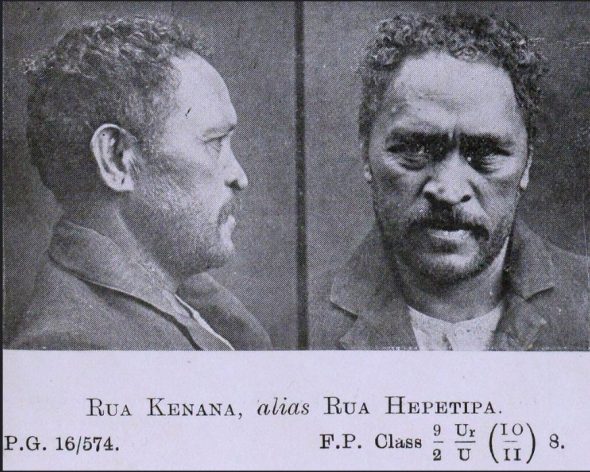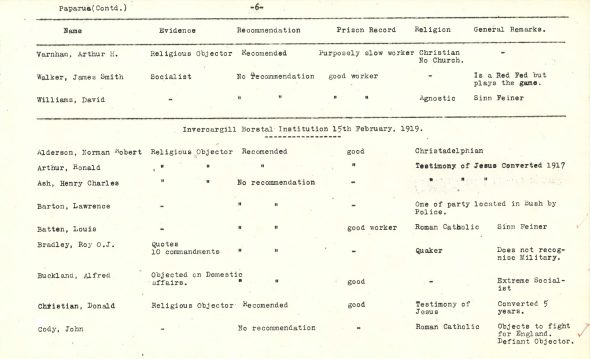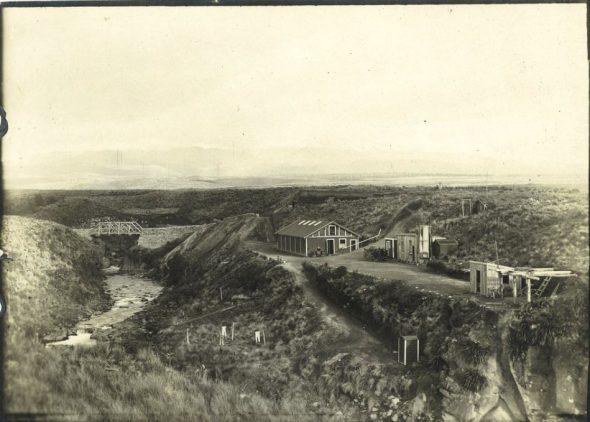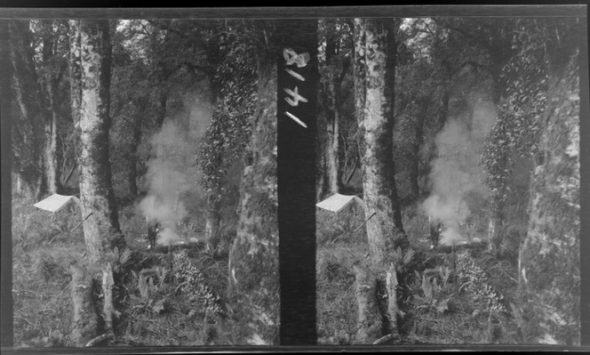Precarious labour is nothing new. Insecure and irregular work has been the norm rather than the exception in the history of capitalism. “For most of human history, work has occurred under unstable conditions, with little legal regulation and little expectation of long-term continuity.” Precarious labour today is not so much a new phenomenon “but the return of precarious labour after a three-decade interruption during the Fordist era in some parts of the world.”1
But this is only half the picture. Women and racialised minorities have always had a precarious relation to waged labour.2 Even at the height of Fordism, ‘standard employment relations’—regular, full-time, and long-term work characterised by (mostly) male workers concentrated in a single workplace or industry—were premised on the precarious and often invisible labour of others. As Angela Mitropoulos notes, the stability of ‘standard’ work presupposed vast amounts of unpaid domestic labour by women and the colonisation of indigenous peoples.3 For Mitropoulos, “the recent rise of precarity is actually its discovery among those who had not expected it”; the orthodox union movement with its blindness to longstanding hierarchies within waged and unwaged labour.4
The return (or discovery) of precarious labour has mostly been viewed by traditional unions as a threat, not only to working conditions but to the continuing existence of unions themselves. As mediators of exploitation rather than advocates for its abolition, the answer to precarious labour for such unions is often government-regulated work, the promotion of ‘decent work’, and job creation—in a nutshell, more work—none of which address the root causes of precarity.
Yet there are other, more liberatory alternatives. The struggle against the wage relation and its gendered and racial divisions has been present in the best of Marx’s writing, certain anarchist and communist currents (such as the Industrial Workers of the World, IWW), and revolutionary feminist thought. The problem for this perspective today, notes Kathi Weeks, is that “the gospel of work and the work ethic have so colonized our lives that it is difficult to conceive a life not centered on and subordinated to work.”5
Using examples of precarious work from New Zealand’s past, I want to explore this antiwork tradition and the refusal of work as a potential strategy for both the abolition of precarious labour, and the very relations that call capital and the proletariat into being.6 A related question, and one of interest to the discipline of labour history, is how resistance to work might reshape the way labour militancy is defined and measured, and how the historical emergence and re-emergence of certain forms of struggle can situate the present in the history of capital.7
Precarious pasts
Stout despite his sixty years and clean-shaven except for a greying moustache, in 1918 Joseph Goss was an aging watersider and agricultural labourer living in Waitara, Taranaki. While he called Waitara home, his precarious working situation meant he often moved about for work. At sixty he was one of the many aging labourers on the edge of the cash economy, trying to pick up jobs where he could.8Before arriving in Waitara in 1914, Joseph had laboured on the wharves in both Wellington and Whanganui. To earn a day’s shift Joseph had to stand on the dock to be selected like cattle at auction, only to work physically exhausting, dangerous jobs. Joseph had hoped to fare better in a smaller port like Waitara, but he was mistaken.
Joseph was a prolific letter writer, and the struggle for and against work is a recurring theme in his letters. Joseph wrote that since leaving Whanganui there had been no work for him “or any man of his type and principles”, and figured that for over four years he had not averaged more than 10/1 shillings per week. In 1918, that could buy around twenty-five loaves of bread or two large bags of flour. It was only “thanks to our frugal mode of living, coupled with simple wants, we have been able to carry on.”9 The reproduction—the survival—of Joseph and his wife Mary, relied as much on Mary’s unwaged work as the meager wages Joseph could earn.
Thanks to his age, or possibly his opposition to capitalism, Joseph could not hold down a permanent job, even with the labour shortage caused by the First World War. Irregular work was the norm. “Since I last wrote I have had a job for a fortnight in the cooling chamber, and a couple of days out at the Kersone Sheds. I have been able to square up with Room money, so I am alright for a short while.”10 The cash, however, did not last. “As for your financial position, I am pleased to know things are going so well with you. Wish I could say the same for myself”, Joseph wrote three months later. “Would have sent you papers oftener from this side, but could not afford the stamps.”11
His precarious working life, plus the militarism of the war, left Joseph despondent and bitter. “Life for me has lost all charm”, wrote Joseph, who vented his anger at the military, the ruling class, and his fellow workers.12 He wasn’t alone. Henry Aloysius Murphy was a gristly Australian labourer working on the Auckland wharves. Quoting Emerson, Henry believed that “Doomsday is every day for the workers”, and poured out his disgust at his co-worker’s desire for work. “I hate to talk about work it’s the most degrading thing that I know of” wrote Henry in May 1919. “Things have slackened up here on the wharves (but) seven home boats expected in next month, that ought to gladden the heart of bone headed bastards that’s all they want (plenty work). I would work them 2 death if I had my way!”13
It wasn’t long before these letters were stopped by the state. From the perspective of power, these were seditious ideas. Work was to be worshipped and the myth of the dignity of labour preserved. Echoing longstanding concerns over vagrants—those who failed or refused to internalise dominant middle-class values of work, industry and respectability—the state linked these letters to criminality and social threat.14
Henry was hauled before the court for failing to register as a reservist under the Military Service Act and was sentenced to fourteen days hard labour. On his release he was due to be deported, but agreed to leave New Zealand ‘voluntarily’ and returned to Australia. Joseph fared slightly better. His age saved him from prosecution, but his precarious existence continued. In 1919, Joseph had moved inland to find more work, and by 1923 he eked out a living as a gardener in Napier. It was here that Joseph Goss died on 26 March 1934. He was 76 years old.
Toil - travail - tripalium - torture
These letters suggest that Joseph and Henry viewed waged work as dead time rather than a source of dignity or the pillar of social value. Their precarious working experience also shows that for many in their position (like most precarious workers today), unions and their membership fees were mostly out of reach. Traditional unions were (and are) based on the world of paid work, something Joseph and Henry either struggled to find or ultimately abhorred. They were not alone. Stevan Eldred-Grigg found that many workers “saw their work as something actually distasteful, boring, depressing and tedious. The dislike they felt for their work was one of the most fundamental limitations of the union movement.”15 The mystical cult of work pushed by employers, teachers, the clergy, middle-class socialists and most union leaders was far from accepted. Some amongst New Zealand’s working-class were more likely to sympathise with Paul Lafargue’s The Right to Be Lazy, with its defence of idleness, than the proud workers portrayed in Edward Bellamy’s Looking Backwards.This is hardly surprising. The French word travail, to toil, comes from the Latin tripalium or ‘instrument of torture’, and as the case of Henry Murphy suggests, there is a rich vein of working-class struggle against toil—those who believed in liberation from work rather than liberation through work. Yet resistance to work during the twentieth century has often been underestimated by labour historians. More often than not work has been viewed as creation rather than coercion, and workers as producers rather than resisters who must be constantly disciplined or seduced to accept work.16 Traditional yardsticks of working class militancy are therefore measured in organisational or ideological terms.
But something interesting happens if resistance to work rather than party or union membership is taken as a measure of class-consciousness. Not only does it widen the terrain of study, it gives working people like Joseph Goss and Henry Murphy agency in the making of their own history. It moves “the self-activity of the working class to centre stage” even if that activity was rooted in self-preservation.17
As Michael Steidman notes in his classic Workers Against Work, an investigation of workers’ resistance to work also links the histories of women, unemployed workers, and immigrants and makes those histories more visible:
Instead of viewing female workers as less militant because they were relatively uninterested in joining parties and unions, an investigation of their struggles over maternity leave, absenteeism, illnesses, and gossip demonstrates that women also participated in the class struggle… Women identified less with the workplace because of the temporary and unskilled character of their jobs, lower salaries, and familial responsibilities.18
If their avoidance of the workplace is taken as a measure of class-consciousness, “then many women’s minimal identification with their role as producer might lead to the conclusion that females were among the true vanguard or consciousness of the working class.”19
Postwork futures
The examples of Joseph Goss and Henry Murphy, two precarious workers with a tenuous relationship to work and the union movement, helps us to take a longer view of insecure work and how to struggle against it. How the racialised sphere of unpaid or reproductive labour must be at the forefront of organising against capitalist precarity, for example, and that socialist programs of the past, with their affirmation of labour rather than the abolition of labour, are at best outdated, if not irrelevant and counterproductive. Work refusal and liberation from labour should be at the heart of our struggles. And the forms these struggles take need to recover the original sense of the word ‘proletariat’ as those without reserves, including those beyond the formal wage.20
Like Steidman’s challenge in Workers Against Work, this immediately poses questions around worker identity and class-consciousness. Most labour movements were built around an affirmable worker’s identity, one that claimed a universal class character but was actually of a very narrow make-up—the white male industrial worker or those who “conformed to a certain image of respectability, dignity, hard work, family, organisation, and sobriety.”21 This flaw has long been pointed out by Marxist feminists (and others), and their critique seems especially relevant in the present. Thanks to the breakdown of Fordist discipline and managerial techniques, and the return of precarious, flexible working conditions, employers need workers to identify with their work more than ever before. Does it make sense for those resisting precarity to affirm the very same identification with work? As the Endnotes collective argue, “the fundamental contradiction of our society (proletariat-capital) is only potentially deadly to capitalism if the worker confronts her work and therefore takes on not just the capitalist, but what capital makes of her, i.e. if she takes on what she does and is.”22
In this sense, writes Kathi Weeks,
This call to refuse work is not a utopian denial of the terrible, anxiety-ridden experience of precarious labour and the constant struggle to make ends meet. Precarious workers have difficulty refusing work because they have only ever had a discontinuous, uncertain, and temporary relationship with it.24 Demands for better working conditions can and must be made. But as Weeks notes, it is the demand itself that can broaden the struggle, and with it, people’s horizons. Demands that go beyond those offered by traditional unions and the majority of the left—alternatives that seem to end at fair and equitable work—can win material improvements while pointing to postwork futures. They can be a means to a different end—a world where work does not dominate life—rather than an end in themselves.
Past examples of antiwork demands that expand the scope of struggle include the IWW’s campaign for a four hour day with eight hours pay, the Wages for Housework movement, and more recently, the demand for universal basic income.25 With the return of precarious labour, what form these demands take in the present is crucial. For example, in Riot. Strike. Riot, Joshua Clover charts the return of the riot as a form of struggle within the sphere of capitalist circulation. Mapping the food riots of the 18th century to the machine-breaking of Captain Swing and the Luddites to the riots of Watts, Detroit, Newark, Chicago, Los Angeles, Athens, Oakland, and Ferguson, Clover argues that the blockade of circulation, often in the form of rioting, is the modern-day equivalent of the Fordist strike, and the recourse of those “chronically outside the formal wage.”26
Circulation struggles that bring together those beyond the formal wage is just one example from the past with relevance for today. There are countless others—although we should be wary of grafting the past onto the present. Yet as I hope this paper shows, there are lessons from the past that a long view can uncover, just as historical narratives can shed light on examples of antiwork politics. The role of labour historians in the struggle against precarity is to make such examples visible; to provide alternatives that expand the horizon of such struggles; and to question the relationship between precarious and unwaged labour, labour history, and the affirmation of labour rather than its abolition.
- Jared Davidson, November 2017
1. Sarah Mosoetsa, Joel Stillerman, Chris Tilly, ‘Precarious Labor, South and North: An Introduction’, International Labor and Working-Class History 89 (2016).
2. Silvia Federici, ‘Precarious Labor: A Feminist Viewpoint’, accessed 11 September 2017 https://inthemiddleofthewhirlwind.wordpress.com/precarious-labor-a-feminist-viewpoint/
3. Angela Mitropoulos, ‘Precari-us?’, Mute (2005), accessed 4 September 2017 http://eipcp.net/transversal/0704/mitropoulos/en
4. Mitropoulos, as cited by Steve Wright, ‘There and back again: mapping the pathways within autonomist Marxism’, accessed 4 September 2017 http://libcom.org/library/there-and-back-again-mapping-the-pathways-within-autonomist-marxism-steve-wright
5. Kathi Weeks, ‘Imagining non-work’, accessed 11 September 2017 http://libcom.org/library/imagining-non-work-kathi-weeks. For Weeks, the refusal of work is directed against the system of (re)production organized around, but not limited to, the wage system.
6. ‘What matters in reality are the social relations which determine human activity as labour—the point is thus the abolition of these relations and not the abolition of work.’ Théorie Communiste, ‘Much Ado About Nothing’, Endnotes 1 (2008), accessed 19 September 2017 https://endnotes.org.uk/issues/1/en/theorie-communiste-much-ado-about-nothing
7. Joshua Clover, ‘Final Remarks’, from ‘The Crisis and the Rift: A Symposium on Joshua Clover’s Riot. Strike.Riot’, accessed 18 September 2017 https://www.viewpointmag.com/2016/09/29/final-remarks/
8. Steven Eldred-Grigg, New Zealand Working People (Dunmore: Palmerston North, 1990), 69.
9. Joseph Goss, 8 June 1918, AD10 Box 10/ 19/10, Archives New Zealand (ANZ).
10. Goss, 8 June 1918, AD10 Box 10/ 19/10, ANZ.
11. Goss, 8 June 1918, AD10 Box 10/ 19/10, ANZ.
12. Goss, 8 June 1918, AD10 Box 10/ 19/10, ANZ.
13. Henry Murphy, 2 May 1919, AD10 Box 19/ 23, ANZ.
14. David Bright, ‘Loafers are not going to subsist upon public credulence: Vagrancy and the Law in Calgary, 1900-1914’, Labour/Le Travail 36 (1995), 43.
15. Eldred-Grigg, New Zealand Working People, 130.
16. Michael Seidman, Workers Against Work: Labor in Paris and Barcelona During the Popular Front (University of California Press: Berkley) accessed 4 September 2017 https://libcom.org/library/workers-against-work-michael-seidman
17. Richard Price, as cited by Anna Green, ‘Spelling, Go-Slows, Gliding Away and Theft: Informal Control Over Work on the New Zealand Waterfront 1915-1951’, Labour History 63 (1992), 101.
18. Seidman, Workers Against Work. 19. Seidman, Workers Against Work.
20. Joshua Clover, ‘Final Remarks’, from ‘The Crisis and the Rift: A Symposium on Joshua Clover’s Riot. Strike.Riot’, accessed 18 September 2017 https://www.viewpointmag.com/2016/09/29/final-remarks/
21. Endnotes Collective, ‘A History of Separation’, Endnotes 4 (2015), accessed 15 September 2017 https://endnotes.org.uk/issues/4/en/endnotes-the-infrastructure-of-the-modern-world
22. Gilles Dauvé & Karl Nesic, ‘Love of Labour? Love of Labour Lost…’, Endnotes 1 (2008), accessed 15 September 2017 https://endnotes.org.uk/issues/1/en/gilles-dauve-karl-nesic-love-of-labour-love-of-labour-lost
23. Kathi Weeks, The Problem With Work: Feminism, Marxism, Antiwork Politics & Postwork Imaginaries (Duke University Press: Durham, 2011), 17-18.
24. Ann Curcio, ‘Social reproduction, neoliberal crisis, and the problem with work: a conversation with Kathi Weeks’, accessed 11 September 2017 http://libcom.org/library/social-reproduction-neoliberal-crisis-problem-work-conversation-kathi-weeks
25. However, if the demand for universal basic income is for a mere supplement to wages, it will entrench the wage relation and precarious labour rather than open up postwork horizons. See Weeks, The Problem With Work, 137-150.
26. Joshua Clover, Riot. Strike. Riot (Verso: UK, 2016), as cited by Michael Robbins, accessed 12 September 2017 http://www.chicagotribune.com/lifestyles/books/ct-prj-riot-strike-riot-joshua-clover-20160505-story.html
Like Steidman’s challenge in Workers Against Work, this immediately poses questions around worker identity and class-consciousness. Most labour movements were built around an affirmable worker’s identity, one that claimed a universal class character but was actually of a very narrow make-up—the white male industrial worker or those who “conformed to a certain image of respectability, dignity, hard work, family, organisation, and sobriety.”21 This flaw has long been pointed out by Marxist feminists (and others), and their critique seems especially relevant in the present. Thanks to the breakdown of Fordist discipline and managerial techniques, and the return of precarious, flexible working conditions, employers need workers to identify with their work more than ever before. Does it make sense for those resisting precarity to affirm the very same identification with work? As the Endnotes collective argue, “the fundamental contradiction of our society (proletariat-capital) is only potentially deadly to capitalism if the worker confronts her work and therefore takes on not just the capitalist, but what capital makes of her, i.e. if she takes on what she does and is.”22
In this sense, writes Kathi Weeks,
the politics of and against work has the potential to expand the terrain of class struggle to include actors well beyond that classic figure of traditional class politics, the industrial proletariat… after all, work, including the dearth of it, is the way that capitalist valorization bears most directly and most intensively on more and more people’s lives.23
This call to refuse work is not a utopian denial of the terrible, anxiety-ridden experience of precarious labour and the constant struggle to make ends meet. Precarious workers have difficulty refusing work because they have only ever had a discontinuous, uncertain, and temporary relationship with it.24 Demands for better working conditions can and must be made. But as Weeks notes, it is the demand itself that can broaden the struggle, and with it, people’s horizons. Demands that go beyond those offered by traditional unions and the majority of the left—alternatives that seem to end at fair and equitable work—can win material improvements while pointing to postwork futures. They can be a means to a different end—a world where work does not dominate life—rather than an end in themselves.
Past examples of antiwork demands that expand the scope of struggle include the IWW’s campaign for a four hour day with eight hours pay, the Wages for Housework movement, and more recently, the demand for universal basic income.25 With the return of precarious labour, what form these demands take in the present is crucial. For example, in Riot. Strike. Riot, Joshua Clover charts the return of the riot as a form of struggle within the sphere of capitalist circulation. Mapping the food riots of the 18th century to the machine-breaking of Captain Swing and the Luddites to the riots of Watts, Detroit, Newark, Chicago, Los Angeles, Athens, Oakland, and Ferguson, Clover argues that the blockade of circulation, often in the form of rioting, is the modern-day equivalent of the Fordist strike, and the recourse of those “chronically outside the formal wage.”26
Circulation struggles that bring together those beyond the formal wage is just one example from the past with relevance for today. There are countless others—although we should be wary of grafting the past onto the present. Yet as I hope this paper shows, there are lessons from the past that a long view can uncover, just as historical narratives can shed light on examples of antiwork politics. The role of labour historians in the struggle against precarity is to make such examples visible; to provide alternatives that expand the horizon of such struggles; and to question the relationship between precarious and unwaged labour, labour history, and the affirmation of labour rather than its abolition.
- Jared Davidson, November 2017
1. Sarah Mosoetsa, Joel Stillerman, Chris Tilly, ‘Precarious Labor, South and North: An Introduction’, International Labor and Working-Class History 89 (2016).
2. Silvia Federici, ‘Precarious Labor: A Feminist Viewpoint’, accessed 11 September 2017 https://inthemiddleofthewhirlwind.wordpress.com/precarious-labor-a-feminist-viewpoint/
3. Angela Mitropoulos, ‘Precari-us?’, Mute (2005), accessed 4 September 2017 http://eipcp.net/transversal/0704/mitropoulos/en
4. Mitropoulos, as cited by Steve Wright, ‘There and back again: mapping the pathways within autonomist Marxism’, accessed 4 September 2017 http://libcom.org/library/there-and-back-again-mapping-the-pathways-within-autonomist-marxism-steve-wright
5. Kathi Weeks, ‘Imagining non-work’, accessed 11 September 2017 http://libcom.org/library/imagining-non-work-kathi-weeks. For Weeks, the refusal of work is directed against the system of (re)production organized around, but not limited to, the wage system.
6. ‘What matters in reality are the social relations which determine human activity as labour—the point is thus the abolition of these relations and not the abolition of work.’ Théorie Communiste, ‘Much Ado About Nothing’, Endnotes 1 (2008), accessed 19 September 2017 https://endnotes.org.uk/issues/1/en/theorie-communiste-much-ado-about-nothing
7. Joshua Clover, ‘Final Remarks’, from ‘The Crisis and the Rift: A Symposium on Joshua Clover’s Riot. Strike.Riot’, accessed 18 September 2017 https://www.viewpointmag.com/2016/09/29/final-remarks/
8. Steven Eldred-Grigg, New Zealand Working People (Dunmore: Palmerston North, 1990), 69.
9. Joseph Goss, 8 June 1918, AD10 Box 10/ 19/10, Archives New Zealand (ANZ).
10. Goss, 8 June 1918, AD10 Box 10/ 19/10, ANZ.
11. Goss, 8 June 1918, AD10 Box 10/ 19/10, ANZ.
12. Goss, 8 June 1918, AD10 Box 10/ 19/10, ANZ.
13. Henry Murphy, 2 May 1919, AD10 Box 19/ 23, ANZ.
14. David Bright, ‘Loafers are not going to subsist upon public credulence: Vagrancy and the Law in Calgary, 1900-1914’, Labour/Le Travail 36 (1995), 43.
15. Eldred-Grigg, New Zealand Working People, 130.
16. Michael Seidman, Workers Against Work: Labor in Paris and Barcelona During the Popular Front (University of California Press: Berkley) accessed 4 September 2017 https://libcom.org/library/workers-against-work-michael-seidman
17. Richard Price, as cited by Anna Green, ‘Spelling, Go-Slows, Gliding Away and Theft: Informal Control Over Work on the New Zealand Waterfront 1915-1951’, Labour History 63 (1992), 101.
18. Seidman, Workers Against Work. 19. Seidman, Workers Against Work.
20. Joshua Clover, ‘Final Remarks’, from ‘The Crisis and the Rift: A Symposium on Joshua Clover’s Riot. Strike.Riot’, accessed 18 September 2017 https://www.viewpointmag.com/2016/09/29/final-remarks/
21. Endnotes Collective, ‘A History of Separation’, Endnotes 4 (2015), accessed 15 September 2017 https://endnotes.org.uk/issues/4/en/endnotes-the-infrastructure-of-the-modern-world
22. Gilles Dauvé & Karl Nesic, ‘Love of Labour? Love of Labour Lost…’, Endnotes 1 (2008), accessed 15 September 2017 https://endnotes.org.uk/issues/1/en/gilles-dauve-karl-nesic-love-of-labour-love-of-labour-lost
23. Kathi Weeks, The Problem With Work: Feminism, Marxism, Antiwork Politics & Postwork Imaginaries (Duke University Press: Durham, 2011), 17-18.
24. Ann Curcio, ‘Social reproduction, neoliberal crisis, and the problem with work: a conversation with Kathi Weeks’, accessed 11 September 2017 http://libcom.org/library/social-reproduction-neoliberal-crisis-problem-work-conversation-kathi-weeks
25. However, if the demand for universal basic income is for a mere supplement to wages, it will entrench the wage relation and precarious labour rather than open up postwork horizons. See Weeks, The Problem With Work, 137-150.
26. Joshua Clover, Riot. Strike. Riot (Verso: UK, 2016), as cited by Michael Robbins, accessed 12 September 2017 http://www.chicagotribune.com/lifestyles/books/ct-prj-riot-strike-riot-joshua-clover-20160505-story.html





















